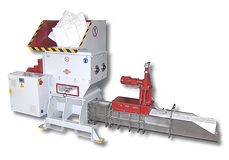Why Recycling Styrofoam and EPS is Your Best Bet
Posted By: Phil Potts
PlasticsToday posted an article a while ago that pointed out two important facts about expanded polystyrene, also known as EPS or Styrofoam, its trademarked form. The first thing they pointed out is that EPS packaging is recyclable. The second point was that it's a small component in our landfills and solid waste stream. While this article was written years ago, recent numbers related to the recyclability of EPS help support these points. In 2018, more than 113 million pounds of EPS were recycled in this country. EPS also makes up less than 1% of the total municipal solid waste stream by weight and volume. That's quite encouraging given the fact that EPS has been considered the misfit child of the recycling world by many.
Where Did All of This EPS and Styrofoam Come From?
Polystyrene was discovered in 1839 by German apothecary, Eduard Simon. He actually didn't realize what he found when he isolated it from natural resin. Eighty years later, Hermann Staudinger, an organic chemist, figured out that Simon had actually discovered a plastic polymer. Staudinger eventually won the Nobel Prize for Chemistry for all of his polystyrene-related research. In the 1930s, scientists at BASF discovered a way to produce polystyrene commercially. Towards the end of that decade, the Dow Chemical Company introduced products that were made with polystyrene to the United States.
Styrofoam was invented by Otis Ray McIntire and patented in 1944. McIntyre was a scientist for Dow. His career there started during World War II when rubber supplies were short. McIntire was determined to create a rubber-like material that could be utilized for insulation purposes. He accidentally created foam polystyrene when he combined styrene and isobutylene. The result of the combination was a foam that was 30 times lighter and more flexible than polystyrene in its solid form. It was also inexpensive to make.
Fast forward to now. In the global EPS market was estimated at 6.62 million tons not too long ago. North America was responsible for 10.1% of the global volume share. The demand for EPS or Styrofoam is expected to grow given the material has proved to be very useful in the construction industry.
How to Overcome EPS and Styrofoam Recycling Challenges
While many municipalities and recycling centers do not accept Styrofoam or EPS packaging, that doesn't mean that these materials aren't sustainable. These places might not have the right foam compacting equipment needed to convert these light, bulky materials into a densified form for economical shipping. If your business has been considering EPS machinery for recycling, know that densified EPS materials are in demand from recycling companies. The
revenue from material sales can even offset the cost of an EPS recycling compactor.

If your local recycling company doesn't accept EPS or Styrofoam, you can take the next step by purchasing the right equipment for your company. If you're ready to get more information about equipment to densify EPS & Styrofoam for recycling, we would be happy to help. Contact us today to learn more about our Heger foam recycling equipment and more.

